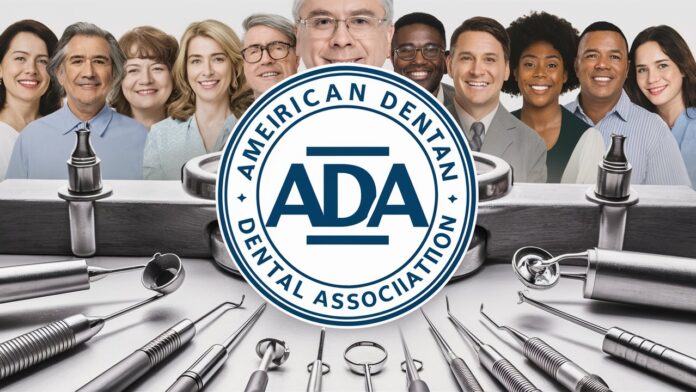Introduction
The American Dental Association (ADA) has been a cornerstone of dental health in the United States since its founding in 1859. As the nation’s leading professional organization for dentists, the ADA plays a pivotal role in shaping dental practices, promoting oral health education, and advocating for policies that benefit both practitioners and patients. With over 163,000 members, the ADA represents a unified voice for dentistry, ensuring that high standards of care are maintained nationwide. This article explores the ADA’s critical functions, from setting clinical guidelines to driving public health initiatives, and answers common questions about its impact on everyday dental care.
1. The Role of the American Dental Association in Modern Dentistry
The ADA serves as the primary authority for dental professionals, providing resources, education, and advocacy to advance the field. Its mission is rooted in improving public health by supporting dentists through continuing education, research, and evidence-based guidelines. The organization accredits dental schools and certifies products, ensuring that both practitioners and patients have access to safe, effective tools and treatments. By fostering collaboration among dentists, researchers, and policymakers, the ADA bridges the gap between scientific innovation and clinical practice. Its Code of Ethics also establishes a framework for professional conduct, reinforcing trust between dentists and the communities they serve.
2. ADA Standards: Ensuring Quality and Safety in Dental Care
One of the ADA’s most significant contributions is its development of rigorous standards for dental products and procedures. The ADA Seal of Acceptance, for example, is a globally recognized symbol of quality. Products bearing this seal—from toothpaste to dental floss—undergo extensive testing to verify their safety and efficacy. Beyond consumer goods, the ADA establishes clinical guidelines for treatments like fluoride use, cavity prevention, and infection control. These standards are informed by ongoing research and peer-reviewed studies, ensuring that dentists adhere to the latest evidence-based practices. By maintaining these benchmarks, the ADA safeguards patient outcomes and elevates the credibility of the dental profession.
3. Public Health Initiatives: Promoting Oral Health Across Communities
The ADA is deeply committed to addressing disparities in oral health access. Through campaigns like Give Kids A Smile and National Dental Hygiene Month, the organization provides free dental care, education, and resources to underserved populations. It also collaborates with federal agencies to integrate oral health into broader public health strategies, such as advocating for water fluoridation and tobacco cessation programs. During crises like the COVID-19 pandemic, the ADA issued critical guidance to help dental offices operate safely, balancing patient care with infection prevention. These initiatives underscore the ADA’s role as a champion of equitable healthcare.
4. Advocacy and Policy: Shaping the Future of Dental Care
Policy advocacy is central to the ADA’s mission. The organization lobbies Congress and state legislatures on issues impacting dental professionals and patients, such as insurance reform, student debt relief for dentists, and teledentistry regulations. Recent efforts include pushing for expanded Medicaid coverage for adult dental services and addressing workforce shortages in rural areas. By engaging in legislative debates, the ADA ensures that the dental community’s expertise informs laws that affect millions of Americans. Its Political Action Committee (ADPAC) further amplifies this influence, supporting candidates who prioritize oral health.
5. ADA Seal of Acceptance: A Trusted Symbol for Consumers
The ADA Seal of Acceptance is a hallmark of trust for dental products. To earn the seal, manufacturers must submit their products for independent testing, proving they meet strict criteria for safety and performance. For example, toothpaste must demonstrate effective fluoride delivery and enamel protection, while sugarless gum must show it neutralizes plaque acids. This rigorous process empowers consumers to make informed choices, knowing ADA-approved products are backed by science. Since its introduction in 1931, the seal has become a household symbol, reflecting the ADA’s dedication to public education and preventive care.
6. Continuing Education and Professional Development
The ADA supports lifelong learning for dentists through its Continuing Education (CE) programs. Dentists can access courses on emerging topics like digital dentistry, implantology, and pain management, ensuring they stay at the forefront of their field. The ADA also publishes the Journal of the American Dental Association (JADA), a peer-reviewed publication featuring cutting-edge research and clinical insights. By investing in professional development, the ADA helps dentists deliver higher-quality care and adapt to evolving patient needs, from cosmetic dentistry to geriatric oral health.
7. ADA Resources for Patients: Empowering Informed Decisions
Patients rely on the ADA’s consumer-friendly resources to navigate their oral health journey. The ADA website offers tools like Find-a-Dentist, which helps individuals locate accredited professionals in their area. Educational materials on topics like brushing techniques, nutrition, and managing dental anxiety are freely available, promoting preventive care. During the pandemic, the ADA’s MouthHealthy platform became a vital hub for answering FAQs about COVID-19 and oral health. By democratizing access to reliable information, the ADA empowers patients to take charge of their well-being.

Conclusion
The American Dental Association remains an indispensable force in dentistry, driving progress through standards, advocacy, and education. Its unwavering commitment to quality care ensures that both dentists and patients benefit from innovations grounded in science and ethics. As oral health continues to intersect with overall wellness, the ADA’s initiatives will play an increasingly vital role in shaping a healthier future. Whether you’re a practitioner seeking guidance or a patient looking for trusted advice, the ADA stands as a beacon of excellence and reliability.
Frequently Asked Questions (FAQs)
Q1: What is the primary purpose of the American Dental Association?
The ADA aims to advance dentistry by setting professional standards, advocating for equitable policies, and educating both dentists and the public. It ensures dental practices align with the latest scientific research and ethical guidelines.
Q2: How does a product earn the ADA Seal of Acceptance?
Products undergo rigorous testing by independent experts to verify their safety and effectiveness. Only those meeting the ADA’s strict criteria receive the seal, which is reviewed annually.
Q3: Can the ADA help me find a qualified dentist?
Yes! The Find-a-Dentist tool on the ADA website allows you to search for accredited professionals by location, specialty, and language spoken.
Q4: Why is ADA membership important for dentists?
Members gain access to CE courses, legal resources, practice management tools, and advocacy support. It also connects them to a network of peers for collaboration and mentorship.
Q5: How does the ADA address public health challenges?
Through initiatives like free clinics, educational campaigns, and partnerships with government agencies, the ADA works to reduce barriers to care and promote preventive practices nationwide.
This comprehensive guide highlights the ADA’s multifaceted contributions to oral health, offering insights for both professionals and patients invested in achieving lifelong dental wellness.


